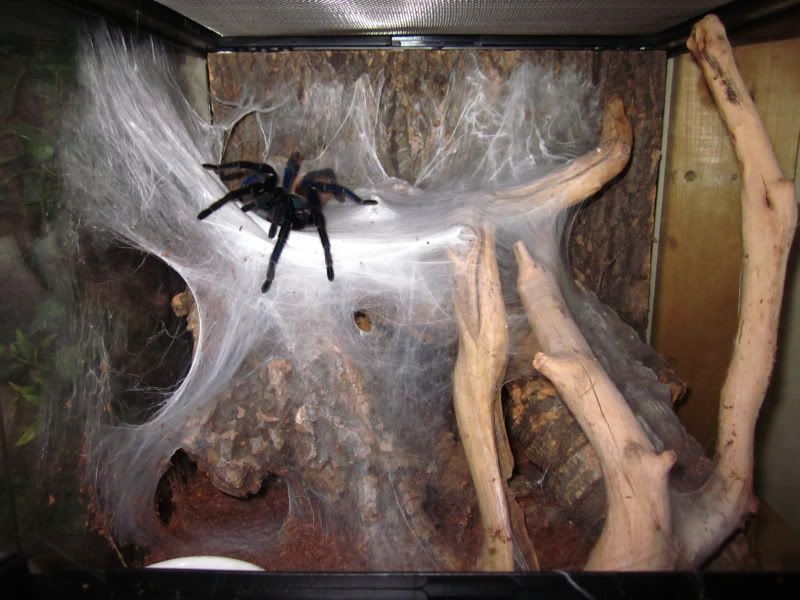Catch Smiley
Arachnosquire
- Joined
- Mar 19, 2013
- Messages
- 59
I'm fairly new to the tarantula hobby (getting my first one back in March, so I encourage ANY advice and input). I recently bought a GBB, it's an adult female (at least I was told it was a female). It is my first adult, about a 5'' leg span, colorful, very pretty. I decided to put it on display in a 10 gal tank. I started with about 4-5" of substrate (Scot's topsoil). A small water dish (everything I read about these guys is that they prefer it dry), a hide, two logs that I stood up vertically (boiled to kill anything harmful that might be on them). I've read that GBBs are semi-arboreal so I put the vertical logs in there to try to encourage her to climb on those instead of the glass, it doesn't work, she still climbs all over the glass. She even climbs upside down on the screen lid, which makes me very nervous when I see that (anyway I can discourage her from doing that? I don't want her to fall).
She's been in there for a few days now, and still hasn't spent anytime on the ground. That's typical for Ts when they get moved into a new environment, right? To spend time on the sides for awhile until they get comfortable in the new place. When I first put her in there, she went "exploring" anytime she crawled down to the ground, she turned around and went back up. She spends most of the time either on top of the hide or on the logs. She's webbed the tank a little, but nearly as much as her previous container was.
She seems to be taking the new environment very well, she even ate a couple of crickets yesterday. Like I stated earlier, any input/advise/suggestions are welcome.
thanks for reading!



She's been in there for a few days now, and still hasn't spent anytime on the ground. That's typical for Ts when they get moved into a new environment, right? To spend time on the sides for awhile until they get comfortable in the new place. When I first put her in there, she went "exploring" anytime she crawled down to the ground, she turned around and went back up. She spends most of the time either on top of the hide or on the logs. She's webbed the tank a little, but nearly as much as her previous container was.
She seems to be taking the new environment very well, she even ate a couple of crickets yesterday. Like I stated earlier, any input/advise/suggestions are welcome.
thanks for reading!





